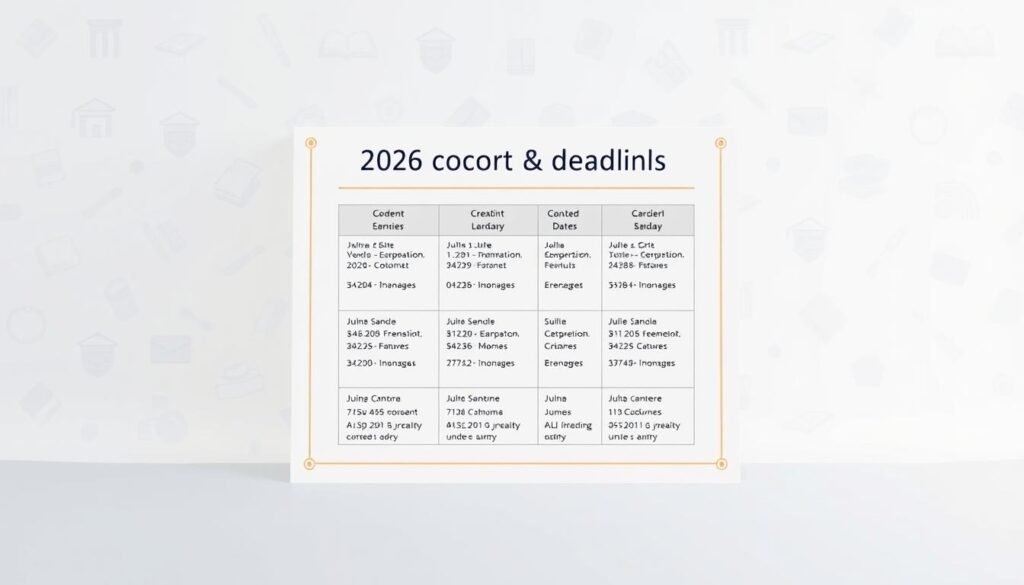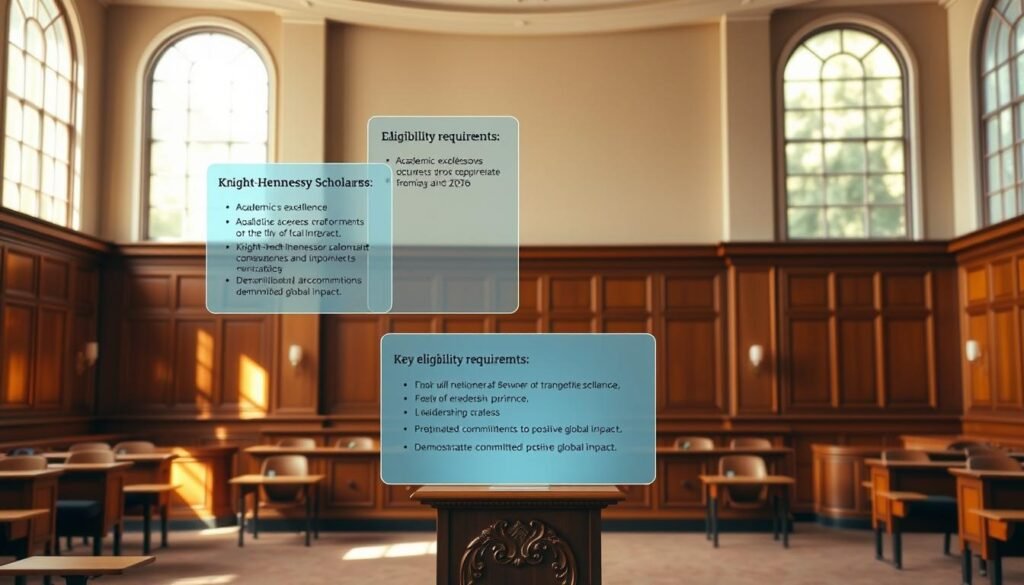
Picture this: you sat at your kitchen table last year, a steaming mug beside a stack of papers, wondering how to tell your story so it mattered. You had a degree, projects, and volunteer hours, but you still felt unsure which parts to highlight.
This brief introduction shows you how the process worked in the year before the October 8, 2025 deadline for the 2026 cohort. You learned that no single score or resume line guaranteed success. The selection panel wanted to know who you had become and what you aimed to do next in a global world.
Use this section to see how the scholarship fits alongside your chosen graduate program, and how to plan backward from key dates. You will find clear steps to shape a compelling narrative and align your degree plans with expectations.
For more details about the program and timeline, visit this overview at stanford university program page.
What you need to know before you apply to join the 2026 cohort
Before you begin, mark the single most important date: October 8, 2025 at 1 pm Pacific Time. Lock this deadline into your master calendar now so you can plan backward through the year.
Key navigation for the timeline means building milestones for research, drafts, recommendation requests, and final review. Treat the process as two parallel tracks: your KHS materials and your full-time graduate program files at Stanford University. Both must be ready to join 2026.
KHS does not use a formula. No single score guarantees entry. The selection criteria value purpose, impact, and growth. So focus on communicating your story clearly rather than chasing checkboxes.
- Confirm eligibility and cross-check each element against program criteria.
- Preempt bottlenecks like transcripts or referee timing by adding buffer days.
- Align your internal schedule to external dates and deadlines so applicants avoid last‑minute issues.
Eligibility requirements for the 2026 cohort at Stanford University
Start by checking two core eligibility gates that decide if you qualify for the 2026 intake. Both focus on your enrollment plan and the date of your first degree. Meet these early so you can plan next steps with confidence.
Requirement 1: Admission to a full-time graduate degree program
You must apply to, be admitted to, and enroll in a full-time graduate degree program that starts the same year you join KHS. Eligible examples include DMA, JD, MA, MBA, MD, MFA, MPP, MS, and PhD.
Eligible paths and important exclusions
One of these four pathways must apply: concurrent applicant starting both the program and the scholarship year; deferred admit aligning start dates; current Stanford student adding a second full-time degree; or a first-year PhD applying to begin in year two.
- Exclude Honors Cooperative Program, Master of Liberal Arts, JSD, MLS, coterminal study, and MA/MS add-ons within your current PhD discipline.
Requirement 2: Your first undergraduate degree date (and military note)
Your first degree must have been earned in January 2019 or later for the 2026 cohort. If you have qualifying military service, the window extends to January 2017.
Current students can apply if you will complete your first degree by September 2026. Within the allowed years, recency does not give an advantage focus on the strength of your materials instead.
- Confirm your planned start term with your target department to prove alignment.
- Document your status clearly so reviewers can verify eligibility quickly.
Knight-Hennessy Scholars application guide (Stanford): the step-by-step flow
Map a clear, synchronized timeline so your fellowship and degree pathways align for the same cohort year. All scholars are enrolled as graduate students who join the program in addition to their chosen degree. You may apply concurrently to both the graduate degree program and the fellowship, but both must start in the same year.
Apply concurrently to your Stanford graduate degree program
Start both admissions tracks at once. Open the department portal and the fellowship portal early. Note differences in word counts, file names, and deadlines.
Prepare and submit your KHS application
Outline your statements, short answers, resume, and recommendation plan. Contact referees early and align their submission windows so they cover both programs.
Plan so both start in the same year
- Create a navigation plan for both portals with checkpoints and final proofing.
- Slot drafting and revision windows against department deadlines.
- Set reminders for status checks after submission to handle follow-up requests.
Dates and deadlines: mapping your 2026 timeline
Map your timeline by fixing the final deadline first and working every milestone backward from that date. The KHS portal closes on October 8, 2025 at 1 pm Pacific Time. Treat that cutoff as the anchor for your year of work.
Milestones from planning to submission
Milestones from planning to submission
Build a master timeline that tracks discovery, drafting, feedback, and final checks. Reserve buffer weeks for transcript orders, test score reporting, and referee follow-ups.
Create a weekly execution plan that advances both your degree program materials and fellowship materials in parallel. Use a simple checklist to note what you uploaded to which portal.
«Working backward from a fixed deadline reduces last-minute rush and keeps your narrative consistent.«
Coordinating Stanford program deadlines with KHS
Collect all department dates early and overlay them with the KHS schedule. Validate every requirement well before submission, including eligibility requirements you confirmed earlier.
- Reserve buffer weeks for logistics and letters.
- Plan mentor touchpoints and an external proofread.
- Hold calendar blocks across months and years to maintain momentum for the 2026 cohort.
What characterizes a Knight-Hennessy scholar: admission criteria in practice
A true candidate shows leadership that seeks measurable change, not just impressive titles. You will need to show how your decisions led to clear outcomes and how you learned when things went wrong.
Purposeful leadership and impact at scale
Demonstrate ethical judgment and resilience. Describe moments when you made tough choices and kept teams moving under pressure.
Show measurable results. Use numbers, timelines, or growth indicators so reviewers see scale and clarity of impact.
- Explain how you mobilized others to solve wide-reaching problems.
- Highlight cross-discipline collaboration that strengthened community outcomes.
- Connect your leadership philosophy to future work you will pursue during graduate studies and beyond.
«Leaders who elevate collective results, not just personal success, stand out.»
Preparing your applications: materials and components that stand out
Prepare your materials so every part of your file points to a single, memorable story about your goals. Use each document to show who you are, what you achieved, and where you will go next. Keep facts consistent so reviewers trust your record.
Show who you are, what you’ve done, and what you aspire to do
Build a clear portfolio that links experience to impact. Draft short statements that tie your motivations to your chosen graduate degree and to the knight-hennessy scholar profile.
Recommendations and how to brief your referees
Choose referees who can speak to character and performance. Brief them with concise bullets, dates, and outcomes so letters are specific and credible.
Aligning your narrative across KHS and your graduate program
Standardize titles, dates, and results across CVs and essays to avoid discrepancies that harm admission confidence.
- Use active, precise language and quantify results.
- Tailor examples to the competencies the review values while meeting department expectations.
- Leave time for iterative feedback from mentors familiar with fellowship and graduate admission.
«A consistent throughline beats a dozen mismatched anecdotes.«
Choosing and aligning your Stanford graduate degree program
Decide which degree best amplifies your impact by mapping curriculum, labs, and mentorship to your aims. All scholars are enrolled as graduate students at Stanford University and join the fellowship alongside a chosen degree.
Shortlist degree options across the seven schools. Pick the degree program stanford that best advances your goals while meeting the same-year start rule.
- Assess faculty fit, labs, and centers that strengthen your work.
- Weigh co-curricular leadership and professional development opportunities.
- Check logistics tests, portfolios, and prerequisites—against your timeline.
Paths for current Stanford graduate and PhD students
If you are a current student, map whether you will add a second full-time degree to start both in the same year. First-year PhD students can plan to begin the program in their second year.
«Aligning program schedules and departmental policies early prevents conflicts and keeps your focus on impact.«
For a concise overview of timelines and eligibility, see the fully funded program overview.
Submit with confidence and take your next steps
Finish strong: run a final checklist that confirms every file, date, and referee note is in place before you submit. The KHS deadline is October 8, 2025 at 1 pm Pacific Time, and you must apply and enroll in a full-time graduate degree program that starts the same year.
Before you send: proofread essays, verify recommenders submitted letters for both portals, and ensure resume, transcripts, and supplemental documents match across files. Submit at least 24–48 hours early to avoid technical issues.
, Complete final eligibility checks degree date, program status, and same-year start then submit your knight-hennessy scholars materials and your degree program files. After submission, monitor portals, prepare for interviews, and plan engagement steps if you join 2026.
(FAQ) – Everything You Need to Know
Frequently Asked Questions
What is the deadline to apply to join the 2026 cohort?
The key date is October 8, 2025 at 1 pm Pacific Time. You must submit all required materials by that deadline, including your concurrent graduate degree program application where applicable.
Do I need to be admitted to a full-time graduate degree program to be eligible?
Yes. You must secure admission to a full-time Stanford graduate degree program for the same start year to qualify. Part-time or non-degree options are not eligible.
Which Stanford programs are eligible or ineligible?
Eligible programs include most full-time master’s and doctoral programs across Stanford’s seven schools. Non-degree, part-time, or certificate programs are typically ineligible. Confirm specifics with your chosen program.
What about the date of my first undergraduate degree?
Your first undergraduate degree date affects eligibility. Most applicants must have completed their degree within the specified timeframe. Check official rules if your timeline is unusual.
I served in the military. Are there special considerations?
Yes. Applicants with military service may receive adjusted eligibility timelines. Include service records and consult admissions for guidance.
Do I apply to the graduate degree program and the scholarship at the same time?
Yes, applications should be submitted concurrently. Complete your graduate program application according to its timeline and the scholarship application by its deadline.
How do I prepare materials that stand out?
Highlight leadership, measurable impact, and vision. Use concise personal statements, strong recommendations, and consistent examples across submissions.
What should I tell recommenders when briefing them?
Share a summary of your goals, key accomplishments, and desired qualities to highlight. Provide deadlines and clear submission instructions.
How do I align my narrative between the scholarship and my graduate program application?
Keep motivations consistent. Tailor examples to each application but avoid contradictions. Show how the degree supports your leadership goals.
Can current Stanford graduate or PhD students apply?
Some current students may qualify depending on program and enrollment status. Review program-specific rules or confirm with the scholarship office.
How should I coordinate program-specific deadlines with the scholarship timeline?
Map both timelines early. Set internal deadlines for drafts, recommendations, and test scores. Prioritize earlier program deadlines.
What qualities do reviewers look for in practice?
Reviewers value leadership, impact at scale, collaboration, and ethical decision-making. Show initiative, measurable outcomes, and future contribution plans.
Are there community expectations if I join?
Yes. You are expected to engage with peers, participate in leadership development, and contribute to a collaborative academic community.
What are the next steps after submitting both applications?
After submission, watch for interview invitations or requests for documents. Continue preparing by refining your leadership examples and staying ready to discuss your plans.

